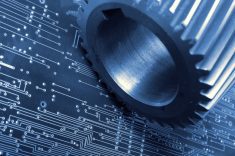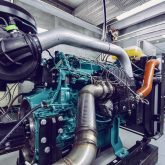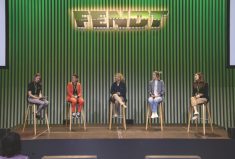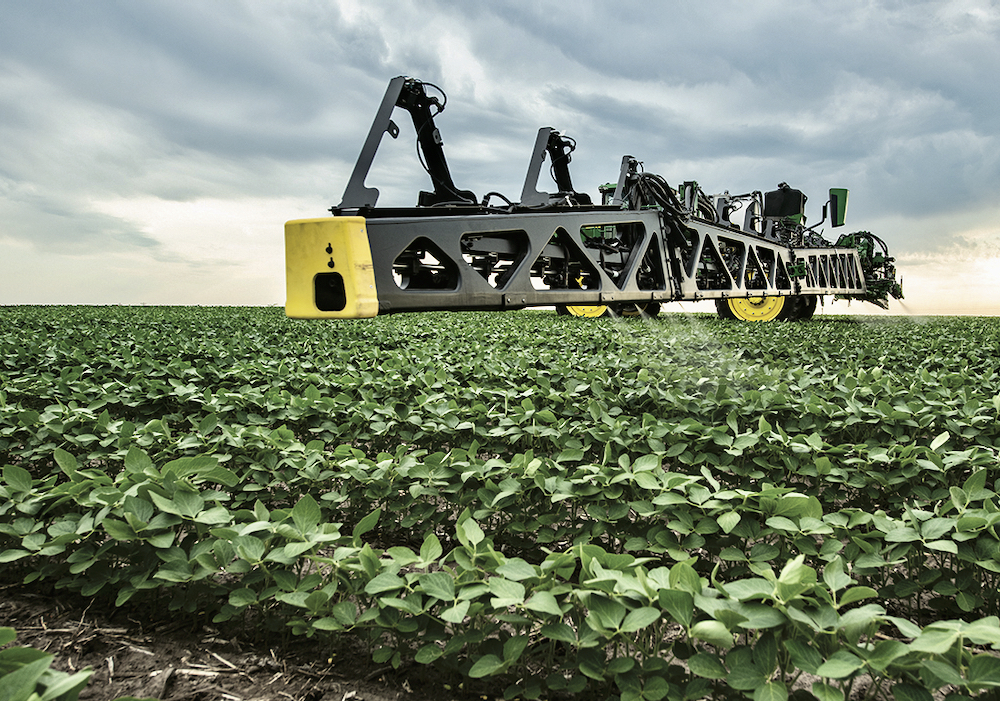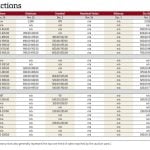At first, these two big deals seem very similar. In 2017 John Deere spent US$305 million to buy Blue River Technology, a firm that was developing artificial intelligence for agricultural robotics. Then, this past summer, the green brand announced it is bringing another tech firm into the fold, this time spending US$250 million on a Silicon Valley startup called Bear Flag Robotics, which has developed autonomous machine systems.
But this second acquisition is very different.
After the earlier purchase, Deere went straight to Agritechnica in Germany, showed off the concept machines it had under development with the Blue River technology and promising that the technology would eventually make its way to the world’s farms.
Read Also

Farmland values: assumptions and realities
Where farmland values are headed and what decisions farmers should make
With this year’s Bear Flag purchase, by contract, Deere has instantly become a retailer of autonomous ag machines. That’s because Bear Flag is already selling autonomous ag systems to local California farmers with technology designed to retrofit existing equipment.
Under Deere ownership, Bear Flag will not only continue to do this but there are also plenty of hints that the technology will soon be offered to a much broader swath of farmers through Deere dealers too.
“We’ll be exploring how the (dealer) channel will interact with this solution over the course of the next six to 12 months,” said Dan Leibfried, director of automation and autonomy at John Deere. “That is going to be one of the linchpins to help us scale this out … We’re going to work together (with dealers) over the course of the next few months to lay out our road map.”
As she spoke to reporters, Aubrey Donnellan, co-founder and COO of Bear Flag Robotics, was optimistic the technology is ready for a much bigger market.
“Get excited. It’s going to be available very soon,” she said.
“The reality is, it’s in-market today,” added Leibfried. “This isn’t just an R&D project where it’s not in customers hands exchanging value. It’s already in-market with a limited set of customers.”

This announcement by Deere is only its latest move toward creating a higher-tech future for agriculture.
At a press conference about a decade ago, a senior Deere VP told Country Guide, “the horsepower race is over, and the technology race is about to begin.”
“We’ve talked quite openly about our strategy of automation and autonomy,” said Leibfried. “We believe we’ve got significant momentum, and we’re continuing to make significant investments in the automation space. It’s not just about going from point A to point B, but ensuring the job itself is done to the highest level of quality. We believe we’ve got enough critical mass in that space and value to offer to take this big step into autonomy. (It’s) one of the next frontiers in agricultural value creation.”
Because the Bear Flag technology is meant to be built into existing machinery, don’t expect to see exotic-looking cab-less tractors sitting on Deere dealer lots as a result of this effort — at least, not yet. Indeed, this kind of compatibility with existing equipment was exactly the kind of technology Deere was looking for. It means farmers can get on board with autonomous machine adoption quickly and at a relatively low cost, at least when compared to having to buy a full line of new machines.
“I believe having a retrofit product allows us to tap into a large install base,” said Leibfried. “And that’s one of the value drivers here, meeting customers where they’re at. Whether they’re in the replacement cycle updating their tractor or they’re still working through the cycle of owning the tractor they bought last year or five years ago, we want to meet them where they’re at to give them the opportunity to experience autonomy in a meaningful way.”
Donnellan said Bear Flag decided it just made sense to let machinery manufacturers do what they do best: build the tractors and machines. Her company could then simply retrofit them with the specific components necessary for autonomous operation.

“What Bear Flag Robotics does is we build autonomous technology for farm tractors,” she added. “It’s the hardware, the sensors, the actuators that compute and the software that goes on top of the machine and gives it situational awareness and the ability to not only navigate through these rugged and changing environments but the ability to perform a job effectively.
“We have designed a solution to have kind of a remote mission control centre. A human will be at that control centre, being able to monitor and control multiple machines. That is the method we are at market with today.”
Liebfried agreed: “We looked … at what are the things that could help us accelerate our journey to deliver value for our customers. Retrofitability was one of the big factors that we were looking for.
“Second was in-market learning and in-market experience in a commercial way. And the third is making sure whatever target or company we would evaluate (to acquire) fit our culture and our values and our overall focus to add this value to our overall grower base. Ultimately, that led us to Bear Flag Robotics.”
Bear Flag has had a few years of experience under its belt, working with local California growers on a commercial basis to put their technology to the test, confirming it can be done safely. And Donnellan added that they now have customers across a wide variety of agricultural operations.
“Early days in the company we started doing orchard floor management,” she explained. “We were mowing. We were spraying autonomously. But we ultimately found a very good niche in tillage. And that’s really what we’ve been focusing on for the last few years. We’ve upgraded our machine sizes to accommodate doing that on a larger scale.
“For us as an autonomy company, we’ve been able to farm a ton of autonomous acres, because tillage allows us to do that. It’s done all year round out here. So it’s been a great confluence of customer demand from our customers, and product market fit for the first of many offerings that we’re going to build. Tillage is just the start. We plan to move across all production steps and, frankly, machine types.
“Our focus has been to deliver the best service possible using autonomous technology that can show growers basically the future and the possibilities of not only decoupling their reliance on labour, but also using the technology to make better strategic decisions about how to farm. The data we’re collecting and the data coming off these machines, they haven’t had available to them.”
While retrofitting existing equipment is the plan for now, widespread adoption of automation is bound to affect future new machine design, although how much and when are big questions.
“I think we’re going to see that happen,” said Leibfried. “The only question is when, from my perspective. We’re going to see machine form changes over time as the technology gets adopted and utilized and fits into the operation more appropriately and everybody gets comfortable with it. But jumping all the way from here to there and all of the steps I think is quite a leap. I don’t know the timing of when that will happen, but definitely I see machine form changes as a possibility over the course of the next five to 10 to 15 years.”
As for this first step for Deere into a commercial autonomy offering with this corporate takeover, Bear Flag will retain its name for the near term.
“Time will tell what we do relative to branding and in-market around this,” said Leibfried. “But we believe there is power in the Bear Flag Robotics brand today, not only in-market but to help us attract more talent.”
Of course bringing autonomous technology to the market will mean another business opportunity for Deere dealers.
“We’ve been making investments with (dealers) over the course of the last 20 years in the precision ag space to increase their capabilities and their overall understanding of this space to not only sell the solution, but to support it to the highest level with a great customer experience,” said Leibfried. “John Deere has recognized it’s not good enough to just have a great product. You’d definitely have to have the last-mile support of a channel partner to both sell and support the solution. And we put training and development programs (for dealers) in place along the way to do that. I expect us to do similar things as we move into autonomy over the course of the next few years.
“This is a recognition that autonomy is another step in that long journey of (adding) customer value. We don’t do this for technology and the sake of technology development. We do it because we believe this (labour shortage) is a real customer problem today and a growing customer problem in the future. That’s the first thing I’m excited about.
“The reality is autonomy is going to come much faster to agriculture than it is to on-road.”




